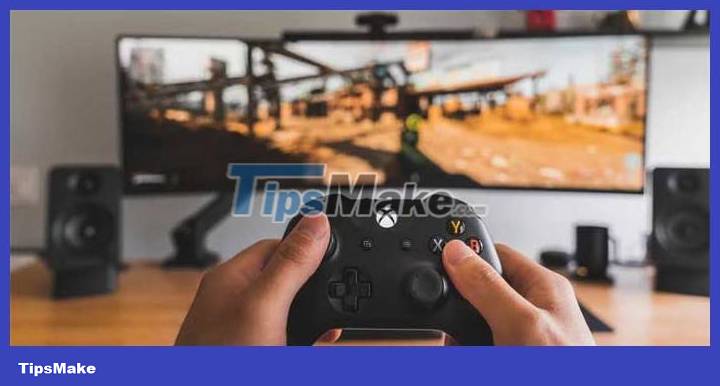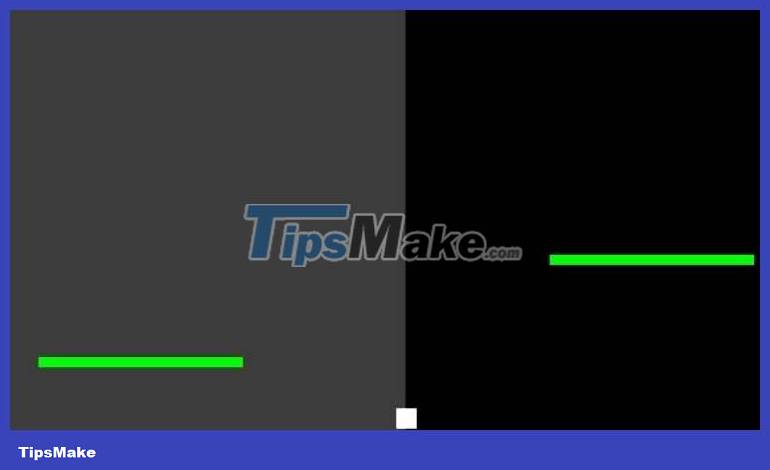How to create scrolling backgrounds in Pygame
This Python game library is packed with features, including some simple tools you can use to create smooth, parallel scrolling backgrounds for your .

Scrolling backgrounds can greatly enhance the visual appeal and depth of the game. Chung can create illustrations for motion, bringing the game to life and engaging. You can create a scrollable background in just a few easy steps using Pygame.
Create a simple game
To understand the concept of a scrolling background in Pygame, start by creating a simple game where the player can move left and right. You can also include 2 platforms, represented by rectangles, representing the game environment. Create a new file named simple-game.py .
First, import the pygame module and initialize it. Then determine the player's starting position and movement speed. Create platforms using pygame.Rect objects and specify their position and size.
Inside the game loop, handle events such as game exit. You can also handle player movement based on input or touch.
Result:

Create different layers
To get the scrolling effect, you can create multiple background layers with different colors. Each layer will move at a different speed, creating a parallax effect. This effect creates the illusion of depth and enhances the sense of movement in the game.
Define two background layers, one that covers the entire game window, using pygame.Rect objects. Alternatively, choose a color for each layer in the background_colors list . The background_speeds list defines how fast each player will move.
# Thêm code này vào phần trước đó background_layers = [ pygame.Rect(0, 0, screen_width, screen_height), pygame.Rect(0, 0, screen_width, screen_height) ] background_colors = [(30, 30, 30), (60, 60, 60)] background_speeds = [0.1, 1.0]Add background scrolling effect
To create the background scrolling effect, you need to update the position of the background layers in the game loop. You will move each layer vertically based on the specified speed.
Create a new file named scrolling-bg.py and add this code with the updates below:
for i in range(len(background_layers)): background_layers[i].x -= background_speeds[i] if background_layers[i].x <= -screen_width: background_layers[i].x = 0 pygame.draw.rect(screen, background_colors[i], background_layers[i])Loop through each background layer. Subtract the corresponding speed from that layer's x coordinate, causing it to move left. If the layer reaches the left edge of the screen, reset its position to the right, creating a continuous scrolling effect.
Finally, draw each rectangular background layer on the screen using pygame.draw.rect() and colorize & pygame.Rect object accordingly.

Added parallax effect while moving
To enhance the parallax effect, you can edit the platform motion that occurs when the player is moving. This will create a clear sense of depth and fluid movement. Create a new file named parallax.py and add the code and updates below:
# Xác định vị trí và tốc độ của platform rect1 = pygame.Rect(50, screen_height - 100, 200, 10) rect2 = pygame.Rect(screen_width - 250, screen_height - 200, 200, 10) platforms = [ {"rect": rect1, "speed": 3}, {"rect": rect2, "speed": 1} ] # Thêm code này vào bên trong vòng lặp game # Chuyển động của người chơi keys = pygame.key.get_pressed() if keys[pygame.K_LEFT] and player_x > 0: player_x -= player_speed for platform in platforms: platform["rect"].x -= platform["speed"] if keys[pygame.K_RIGHT] and player_x < screen_width: player_x += player_speed for platform in platforms: platform["rect"].x += platform["speed"] for platform in platforms: pygame.draw.rect(screen, (0, 255, 0), platform["rect"])Present the platforms as a dictionary containing both rectangular objects and the speed at which the platform will move. The platform updates in the game loop based on the player's movements.
By perfecting this tweak, the scrolling effect will only work when the player is actually moving, enhancing the sense of depth and dynamics.
Above is how to create a scrolling wallpaper for the game using PyGame . Hope the article is useful to you.
You should read it
- Easier game development with Pygame Zero
- How to create a Start menu and a Game Over screen with PyGame
- How to Program a Game in Python with Pygame
- How to use sprites in Arcade to develop games
- Drawing Objects and Shapes in Pygame
- How to download custom fonts and text effects in Pygame
- How to design and create levels in PyGame
- How to add dialogue system in Python game using Arcade library
May be interested
- How to take scrolling, long screen screenshots in Windows
 this guide shows the best tools for taking scrolling, long screen screenshots in windows 11 and windows 10.
this guide shows the best tools for taking scrolling, long screen screenshots in windows 11 and windows 10. - How to turn on and turn off smooth scrolling on Opera
 on opera also features smooth scrolling that smooth scrolls, increases scrolling effect and makes it uncomfortable to the eyes.
on opera also features smooth scrolling that smooth scrolls, increases scrolling effect and makes it uncomfortable to the eyes. - How to create bottom-up scrolling in PowerPoint?
 the end-to-end scrolling in powerpoint is simple and easy to follow, just like the ending in movies.
the end-to-end scrolling in powerpoint is simple and easy to follow, just like the ending in movies. - Instructions for scrolling TikTok videos automatically
 tiktok supports users a lot of actions for videos when you watch videos, such as adjusting the speed of playing tiktok videos, shortening the delivery of videos to watching tiktok videos or automatically scrolling tiktok videos automatically.
tiktok supports users a lot of actions for videos when you watch videos, such as adjusting the speed of playing tiktok videos, shortening the delivery of videos to watching tiktok videos or automatically scrolling tiktok videos automatically. - Why are websites scrolling vertically and not horizontal scrolling?
 visiting any website we see them designed to scroll up and down to display content instead of translating to horizontal. why so?
visiting any website we see them designed to scroll up and down to display content instead of translating to horizontal. why so? - How to enable two-finger scrolling on Windows laptop
 if you want to access web pages and documents faster with your laptop's touchpad, windows' two-finger scrolling setting is the way to go.
if you want to access web pages and documents faster with your laptop's touchpad, windows' two-finger scrolling setting is the way to go. - Easier game development with Pygame Zero
 pygame zero simplifies game development by doing a lot of the work for you.
pygame zero simplifies game development by doing a lot of the work for you. - How to turn off smooth scrolling in Google Chrome
 when you turn on smooth scrolling, you can see smooth images in chrome, you'll see smoother images when you use the mouse to scroll the content on the google page. however, some people want to turn this feature off so that chrome can work faster.
when you turn on smooth scrolling, you can see smooth images in chrome, you'll see smoother images when you use the mouse to scroll the content on the google page. however, some people want to turn this feature off so that chrome can work faster. - How to Change Scrolling Speed on a Mac
 you can fine-tune the scrolling speed of your mouse from the mouse section of the system preferences menu. if you're using a trackpad, the scrolling speed settings can be found in the accessibility section. click the apple menu. this is in...
you can fine-tune the scrolling speed of your mouse from the mouse section of the system preferences menu. if you're using a trackpad, the scrolling speed settings can be found in the accessibility section. click the apple menu. this is in... - Windows operating system: Exploiting scrolling function
 most mouse devices have a control wheel arranged between the right and left buttons. this wheel button allows scrolling quickly, but that's just one of its capabilities. here are the steps to exploit scrolling in windows.
most mouse devices have a control wheel arranged between the right and left buttons. this wheel button allows scrolling quickly, but that's just one of its capabilities. here are the steps to exploit scrolling in windows.










 How to broadcast communication events between components in Vue
How to broadcast communication events between components in Vue How to build a QR Code generator using React
How to build a QR Code generator using React Containerize Go App with Docker
Containerize Go App with Docker How to compress and decompress files in Node.js
How to compress and decompress files in Node.js How to use Evernote as a learning tool
How to use Evernote as a learning tool How to fix error 740 'Requested Operation Requires Elevation' on Windows 10/11
How to fix error 740 'Requested Operation Requires Elevation' on Windows 10/11